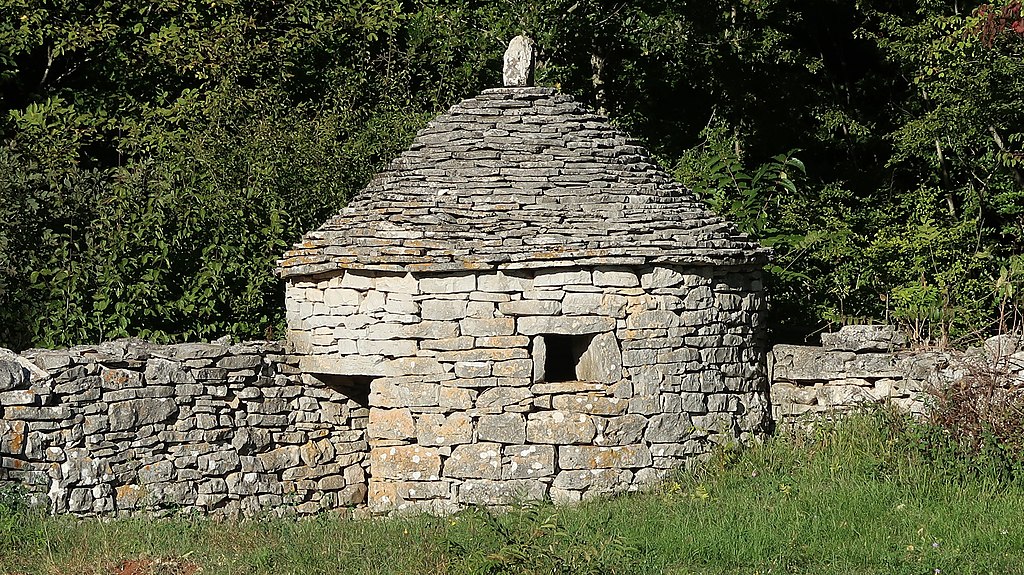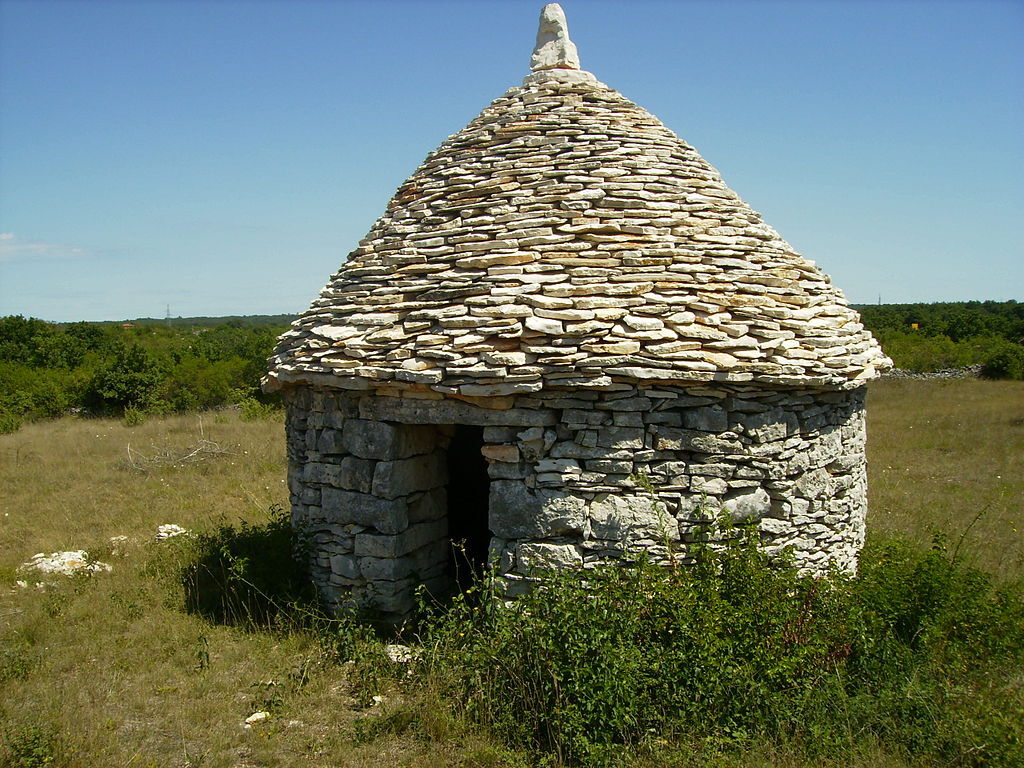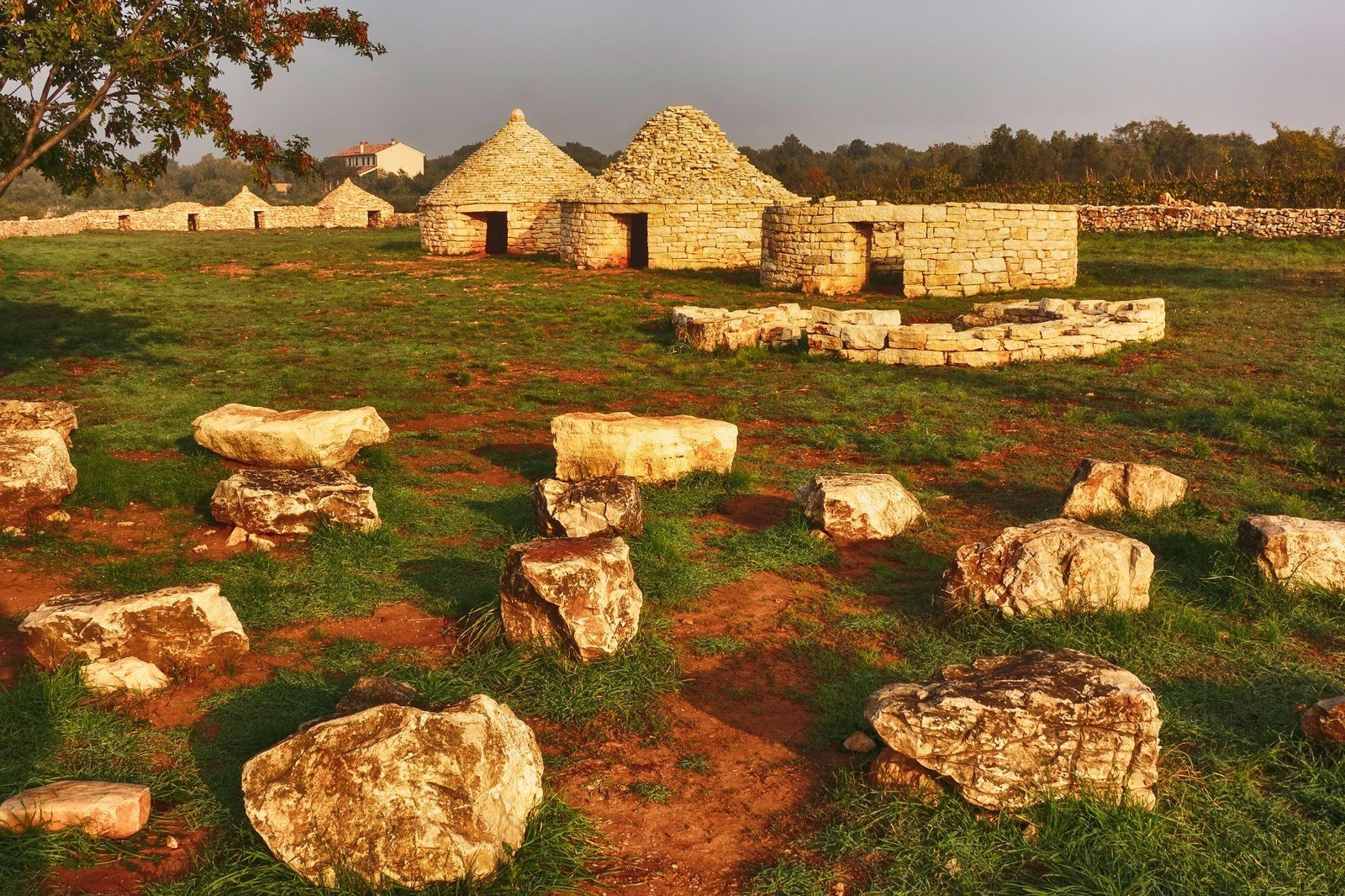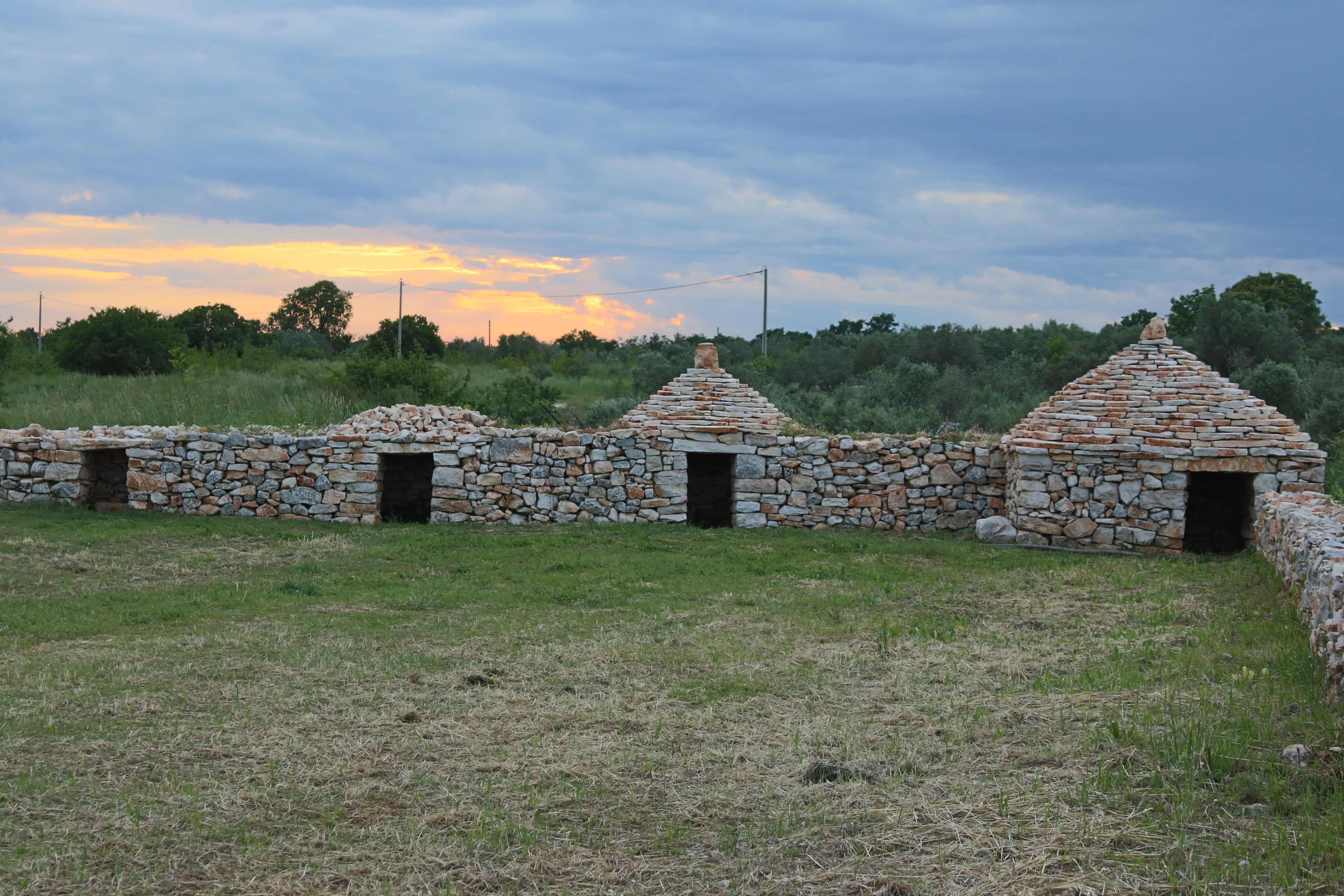Kažuni, Traditional Stone Huts of Istria
February 21st, 2022 - Built entirely of stone, the cylindrical huts provided shelter to shepherds and farmers.
There’s no lack of magnificent architecture in Istria with all the masterpieces of times past preserved in this magical region. Think of the ancient Roman amphitheatre Pula Arena, the Euphrasian basilica in Poreč, or the countless bell towers standing tall on Istria's rolling hills.
And yet, none of the renowned monuments in Istria are as iconic as the humble kažun [ka-zhoon]. Essentially a trademark of the region, second only to the everpresent Istrian goat, the kažun is a traditional stone hut found all over central Istria, most commonly around the town of Vodnjan.
 A kažun near Kanfanar, Istria
A kažun near Kanfanar, Istria
The kažun is a simple cylindrical structure built entirely of stone without the use of binding agents. They owe their distinctive appearance to a few rudimentary design features: they have a circular ground plan, a conical roof, and a small rectangular door. They vary in size, some are a masterful display of precision, some a bit more crude, some feature a tiny window or two, but overall, they’re unmistakable.
Their primary purpose was to provide shelter to shepherds and farmers who spent their days outdoors, working in the fields. A place to seek refuge from sudden rain or scorching summer heat, to have a midday meal and enjoy a moment of rest in the shade. They were also used as shelter for livestock, and at times for storage.
 A kažun near Vodnjan
A kažun near Vodnjan
Similar structures reportedly existed on the Adriatic coast as early as in prehistoric times, and are found in varying forms all over the Mediterranean. It can’t be said for sure when the stone huts first appeared in Istria, but they grew to become a staple of the region, where they’re much more commonly found than in any other part of the Croatian coast.
They started popping up more frequently in the 18th and 19th centuries, when the sudden population growth in Istria resulted in increased agricultural production. The more crops and cattle to tend to, the more farmers working the fields, the higher the need for shelter and storage. It’s estimated that as many as 3000 kažun huts remain standing to this day in the Vodnjan area alone!
 Kažun Park / vodnjan.hr
Kažun Park / vodnjan.hr
Speaking in modern terms, as far as sustainable architecture goes, you won’t find a better practice than the kažun. No other materials were used to build them other than stone, which wasn’t hard to source as the terrain is abundant in it. Whoever wanted to cultivate the land had to clear the soil of stone first, resulting in plenty of building material to work with. The kažun was a byproduct of agriculture in more ways than one, a clever feat of engineering that made sure no resource went wasted.
The traditional method of kažun construction was passed down from generation to generation, and even though there’s much less need for them these days, it definitely isn’t a lost art. There are many enthusiasts in Croatia keeping the dry stone building technique alive, and since the famous kažun is an integral part of Istrian identity, it’s no surprise that it has its own theme park.
 Kažun Park / vodnjan.hr
Kažun Park / vodnjan.hr
The Kažun Park near Vodnjan is referred to as a museum in the open, dedicated to the little huts that adorn the Istrian landscape. It aims to introduce the public to traditional building methods, with construction broken down into four distinct stages to make it easier to comprehend: the foundations, the walls, the roof, the finishing touches. Anyone can have a go at it, as the park doubles as a place to learn and practice dry stone building.
Even if you’re not inclined to try your hand at traditional skills, that doesn’t mean you can’t have a kažun of your own. They appear to be an endless source of inspiration for souvenirs, and can be purchased all over Istria in numerous forms varying from small-scale replicas to mass-produced keychains. In case you want the real deal, keep an eye out for craft fairs and similar traditional manifestations, as they’re your best chance of finding hand-built kažun models made of stone - a lovely, authentic keepsake to remind you of the time spent in terra magica.


